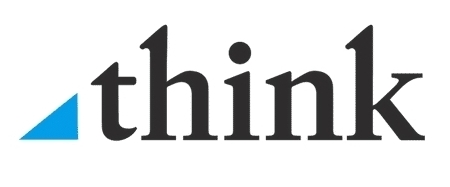
By: Andrew Baldizon, Charles R. Jacob III, A.J. Swartwood
In this ongoing article series, the attorneys at Goulston & Storrs will keep you up to date on the current and emerging issues related to workouts and the Commercial Real Estate market.
With rising interest rates, the economic slowdown, and an uptick in distressed real estate, commercial borrowers and lenders are increasingly finding themselves staring down default. When loans turn problematic, workout agreements provide an opportunity for lenders and borrowers to attempt mitigation for an oncoming default and, ideally, reach an equitable arrangement for both sides.
But what if negotiations go sideways? Must lenders continue to negotiate and come to an agreement with a borrower in default?
While the law often places clear limits on duties imposed on a lender, borrowers sometimes argue for a duty of good faith negotiation, or even raise the specter of litigation over potential lender liability. Lender liability is not a legal doctrine, but it is shorthand for claims asserted by borrowers against lenders under various theories including contract, tort, fiduciary duty, and other common law or statutory theories.
Lessons Learned
- Borrowers have had minimal litigation success against lenders. Courts largely reject borrower arguments attempting to impose additional duties on lenders beyond the contracts at issue. For instance, in New York, a borrower argued that lender’s refusal to permit refinancing and renegotiation of defaulted loans formed the basis of a claim for breach of the implied covenant of good faith and fair dealing. Ultimately, the court rejected the argument, simply pointing to the loan agreement allowing the lender the right to foreclose post-default, and did not require further negotiations on the lender’s part. Outside of any explicit terms within the governing contract and a standard obligation of good faith and fair dealing, courts are hesitant to manufacture borrowers’ rights outside the contract itself.
- Lenders have all the power in the “power of sale.” The U.S. Court of Appeals for the First Circuit has examined similar arguments within the context of a mortgagee’s power of sale. Absent an explicit provision in a mortgage, the court determined there is no duty on the lender’s part to negotiate for modification after default. While the court acknowledged mortgagees have an “independent duty at common law to protect” a mortgagor’s interests in exercising the power of sale, this would not go beyond typical reasonable and good faith efforts to sell a property for the highest value possible.
- Limited state statutes may provide limited relief. Some state legislatures have enacted statutes, providing for mechanisms of negotiation in the event of default. In California, lawmakers modified nonjudicial foreclosures by mandating mortgage services affirmatively offer loan modifications or workout plans to qualifying defaulting borrowers. A borrower sued a lender using the statute as a basis for lender liability; but the court held that, if a borrower is not eligible for a loan modification under the statute, default may be entered, a duty to negotiate is not triggered, and cannot be utilized for claims of fraud or misrepresentation. Short of qualification under such a statute, however, the courts appear hesitant to give borrowers additional rights outside of what was negotiated originally between borrower and lender.
Lender Liability to the Borrower
While lender liability never gained much traction in New York or Massachusetts, other state courts have waded into these disputes. When a lender is found liable to a borrower, it is usually for one or both of two reasons:the lender, even if exercising rights, has taken undue control of the borrower; or the lender abruptly changed its position in negotiations after leading a borrower to believe that forbearance was being granted. A few highlights to consider, include:
- Lender liability probably hit its high-water mark in the 1980s. In one U.S. Court of Appeals for the Sixth Circuit case, the court found that a lender that terminated a loan in conformity with a loan agreement could nonetheless be sued for lack of good faith in not giving the borrower adequate notice prior to termination.
- Later decisions across the country declined to go so far, but the risk of lender liability remains real. In one Texas case, the court found that the lender both exercised excessive control over the borrower and acted “surreptitious[ly]” in its actions towards the borrower, a bankruptcy court found the lender liable for causing the borrower company’s failure, awarding substantial compensatory, lost profits, and punitive damages against the lender.
- In North Carolina, a non-binding decision illustrates what the argument for imposition of duty on a lender can look like. In this case, the borrower entered into several commercial loans with a lender which were subsequently extended and renewed. The lender informed the borrower that it did not intend to continue extending the loans, but continued to negotiate, including sending term sheets for discussion. While the term sheets were being negotiated, the original lender sold the loans to another bank (the defendant), which ceased discussions. Ultimately, the North Carolina Business Court largely granted summary judgment in favor of the lenders, save for the borrower’s claim for “breach of duty to negotiate in good faith.”
Determining Steps Forward
As problem loans arise, and lenders and borrowers look to devise solutions to oncoming default, remember that courts are generally loath to manufacture rights or duties outside of the bounds of a contract, including requirements on lenders to negotiate. However, lenders should not overplay their hands by exercising undue control or abruptly changing positions. The case law regarding potential lender duties is particularly fact dependent, and loan documents regularly feature language restricting a lender’s exposure to further negotiation or amendments. In the current climate, wise borrowers and lenders will consider the implications of default, and how the lender-relationship leverage can shift, when negotiating a loan and mortgage.
Borrowers entering into loans within the distressed real estate environment should be proactive about keeping the default or “worst case scenario” top of mind not only at the outset of negotiations, but as the lending relationship and state of collateral evolve. Working through the scenarios with a trusted legal advisor is always the best place to start.
The authors are attorneys at Goulston & Storrs where they are members of the firm’s Commercial Real Estate Workouts Group, which is a multi-disciplinary team of restructuring, real estate, litigation, and tax attorneys who guide clients through the complexities of commercial real estate loan workouts. In this ongoing article series, Goulston & Storrs will keep you up to date on the current and emerging issues related to workouts and the CRE market. For more information, email the team at DistressedREWorkingGroup@goulstonstorrs.com.



























